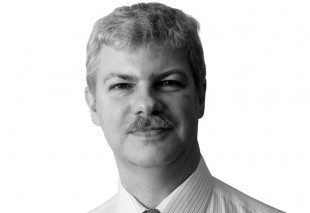

How to make money out of spas

Viability director Guy Wilkinson strips spas down to the basics with a little help from Spa Solutions director Jo Clare, who urges spa designers to work together with operators to enable profitability
Spas have become an indispensable component of top hotels in recent years. This is true not only in terms of the perceived glamour and sophistication of spas, but more importantly, of compliance with classification authorities across our region, for whom this box must be ticked to merit a five-star badge.
Despite this trend, less than half the spas in the Middle East are in fact profitable. That is the assertion of Jo Clare, director of Spa Solutions, a consulting firm founded in Dubai in 2001, whose project portfolio includes spa hotels from Armani to The Address and Marriott to Le Méridien.
“Taken as stand-alone business units, it is possible that up to 60% of the region’s spas are loss-making,” says Clare. “To get a five-star rating, many hotels just do the minimum — put a sauna, a steam room and a couple of massage rooms in a spare corner, call it a spa and justify it as a loss leader.
“But it should never be seen as just an add-on. Anyone who invests in a spa should expect a return — and it costs so little to plan one properly.”
Expert design
As an independent consulting firm, with no affiliations with any product house, equipment suppliers or operators, Spa Solutions has the expertise to advise developers, from feasibility and design right through to management.
According to Clare, creating a profitable spa begins by hiring a specialist. As she says, “you can’t design a spa unless you’ve operated one.”
She, as a qualified spa therapist, has done both, but says that hotel owners, operators, architects and interior design firms alike have often been guilty of building spas without taking such expert advice.
This has resulted in a litany of mistakes, which are only now beginning to come under scrutiny from hotel owners and managers, looking to boost revenues in the global recession.
For example, many hotel owners do not get a market study done and so are unclear of their target clientele.
In Dubai especially, hotel spas tend to concentrate on serving in-house guests, missing out on the valuable disposable income of local residents.
Also, different nationalities may need to be accommodated in different ways, affecting how the guest ‘journey’ through the spa is designed. “While westerners are used to sharing open changing rooms, local national ladies need a private room,” notes Clare.
Other design faux pas include locating the treatment rooms, supposedly havens of peace, right next to the noisy locker rooms, or the spa reception right next to a coffee shop — hardly an ideal private place in which to discuss personal ailments prior to a treatment.
A quick fix?
Spa Solutions is frequently called in to fix the problems of ill-conceived spas, even as soon as six months after they open. Interior design firms may have created a wonderful aesthetic space, but failed to take the practical advice of an experienced therapist when it comes to finishes and fabrics.
For example, Clare had to replace the beautiful leather doors installed in one spa, after they rapidly deteriorated in the humid, oily conditions. Another designer specified marble floors in the spa’s high-turnover showers, creating dangerously slippery conditions.
Above all, what is missing in most cases prior to the design stage is a properly though-out concept for the spa.
“You need a clear storyline that specifies the USPs of your spa. From there you can build viable working concepts, guidelines and service solutions, prior to having operational teams in place,” says Clare.
Where this approach has not been taken, it may be too expensive to completely redevelop a spa.
Nevertheless, significant improvements in guest spa yields can often be achieved simply through the implementation of SOPs, KPIs and benchmarking, both for treatments and retail sales — guidelines which many hotel chains do have for other operating departments, but not spas, according to Clare.
However, a far more preferable approach is to plan properly from the outset, to prevent unnecessary and costly design changes that can easily be avoided.
Guy Wilkinson is a director of Viability, a hospitality and property consulting firm in Dubai.
For more information, e-mail: guy@viability.ae